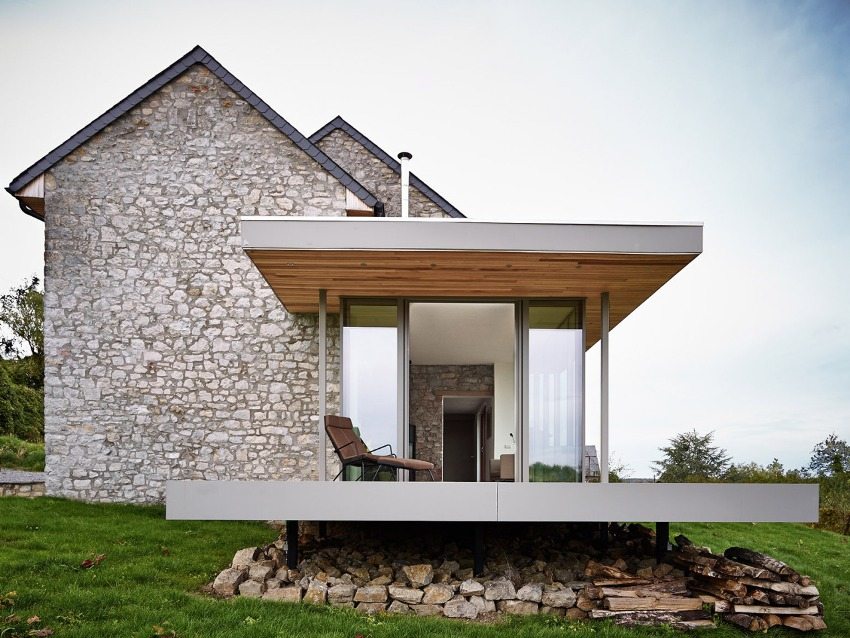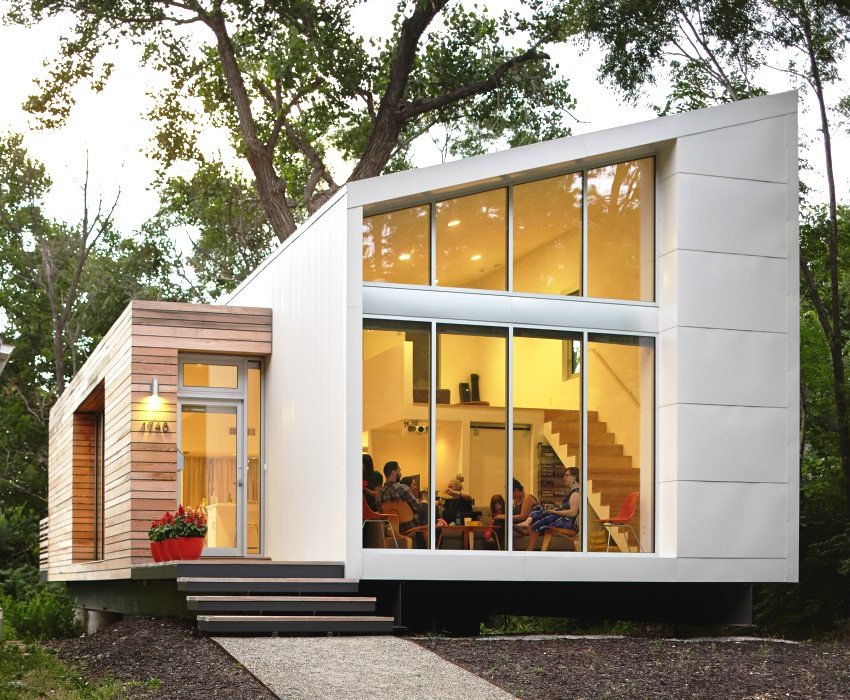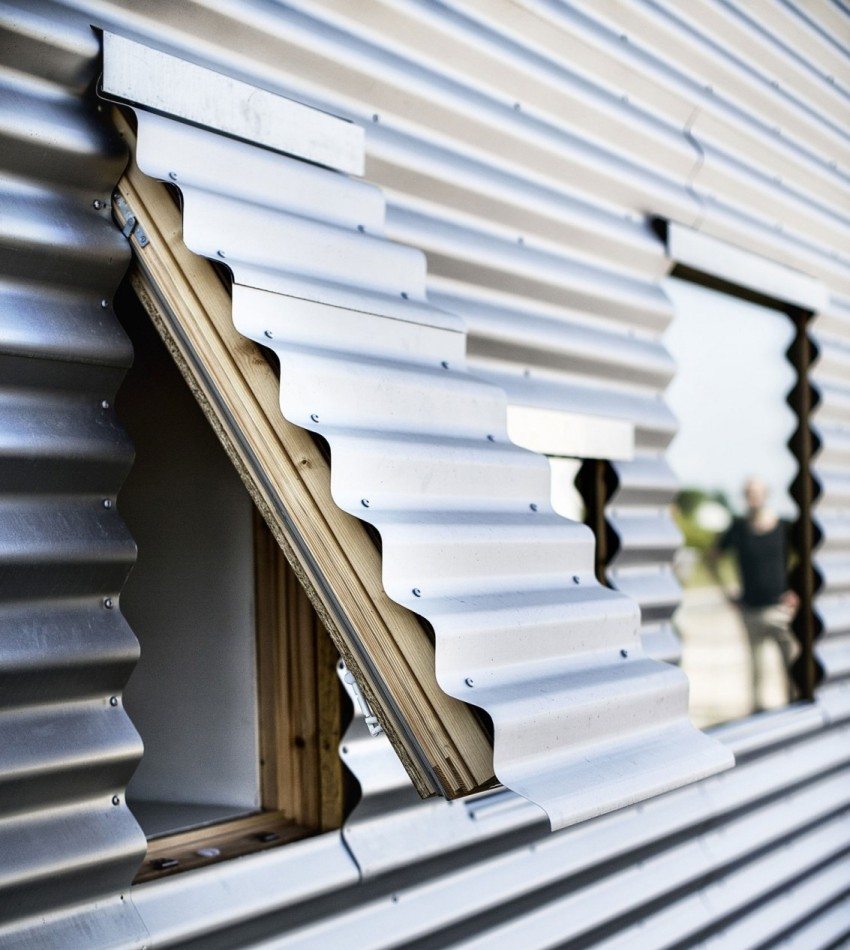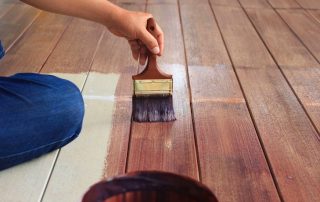If you have to clad the facade of a house: what material is better to choose - the main question over which you have to smash your head. Facade materials can dramatically improve the appearance of any task. Their advantage is not only in decorative properties, but also in the ability to protect the walls of the house from the effects of various destructive factors, cold and wind. Consider the popular types of finishing coatings, their pros and cons, technical features, aesthetic qualities and installation features.
Content [Hide]
Facing the facade of the house, which material is better and more convenient to install
Today, a large number of facade materials are produced, differing in their technical characteristics, decorative qualities, installation features and cost. We list the materials that are most widely heard:
- front ceramic brick;
- natural natural stone;
- artificially created stone;
- composite materials;
- siding.

The use of natural wood covered facade paint in the decoration of the external walls of the house
This is by no means an exhaustive list, but the materials from it seem to be the most in demand.
House decoration with facade bricks
This ancient finishing and building material does not lose any popularity today. Now it is customary to produce it in a different color palette, albeit quite limited. It has various decorative varieties that have not just a smooth surface, but even texture and relief. Some species resemble broken stone. Therefore, brick today allows you to implement any design ideas.
The virtues of brick come from its very nature. After all, this is a material made from natural ingredients, which affected its technical characteristics:
- it does not require any additional protection from moisture, being on the facade of the building. The reason for this is very low water absorption, the level of which does not exceed 6%;
- the material has excellent resistance to any, even the most unfavorable, external factors. Neither precipitation nor wind is afraid of him;
- since bricks are made from natural minerals, they in no way interfere with the evaporation of moisture from the walls. This protects the facade from condensation;
- not very difficult installation, although it requires some experience and skills. Laying on cement mortar with a thickness of half a brick is carried out along the entire perimeter of the building.It is possible to create a heat-insulating layer between the wall and the masonry;
- because of its hardness, the brick perfectly resists mechanical and chemical influences;
- environmentally friendly material.
Despite the huge number of positive properties, brick also has its drawbacks, which, in any case, must be remembered when deciding which material is better. Facing the facade of a house with a brick is not always possible due to its significant weight. Not all structures are able to withstand.
Helpful advice! When constructing masonry, horizontal waterproofing must be applied to the foundation. Otherwise, moisture will gradually destroy the lowest row of bricks.
Natural and artificial stone
Natural stone is a very expensive, but beautiful and durable finishing material. People have been processing it for several millennia for finishing the facades of houses. The stone is able to give any structure a very respectable and solid appearance. Limestone, granite, marble, sandstone, shell rock and quartzite are most often used for cladding. The physical properties of natural stone are such that they will not be particularly affected by use for several centuries. Of the shortcomings, only the complexity of installation and processing, as well as a very high cost, are noted.
Not so long ago, these shortcomings were successfully eliminated as a result of the appearance of an artificial stone. He does not intend to be inferior to natural in beauty and durability, but it costs an order of magnitude cheaper. It is much easier to mount it on walls. The material imitates natural rocks so perfectly that at first glance it is impossible to see the difference. Artificial stone is produced in the form of slabs and panels. Fasten it to the prepared walls using an adhesive.
Composite facing materials
This is a new type of cladding that is gradually becoming part of our daily use. The material is a two-layer aluminum panels with a lock joint. They have a layer of mineral or plastic components inside. Aluminum is very well protected from external influences thanks to its multi-layer coating.
In the process of manufacturing composite panels, they are treated with numerous modern and high-quality protective mixtures. Such processing gives aluminum sheets their main unique technical characteristics:
- resistance to environmental influences and various mechanical damage;
- light weight, because of which they can be used for finishing any private buildings, including timber buildings;
- the lowest cost among all finishing materials, which have high performance in terms of heat and sound insulation;
- due to a small linear expansion, such products are subject to very small deformations during the operation of private buildings in various climatic zones.
Installation of composite panels is very simple. At their ends there are locks with which the parts are connected to each other. It can be mounted both directly on flat walls and on a crate, which can be made from both wooden bars and metal profiles.
Vinyl type siding
In the last decade, few people have thought about which material is better. House cladding with siding was the most popular theme. Its installation is carried out by means of a structure on the facade of the sheathing. The panels are fastened with self-tapping screws into the perforation. This effectively prevents deformation due to thermal expansion.
Siding easily withstands temperature drops from -50 to + 50 ° C, is quite resistant to mechanical light impact and is durable. The thickness of the panels varies from 0.95 to 1.2 mm, the length is from 2 to 6 m, and the width is from 10 to 30 cm. There is a wide variety of products in color and texture, so the decorative properties of the material are at a fairly decent level.
Helpful advice! When deciding on finishing the facade with siding, you need to keep in mind that along with it you will have to buy a large number of various additional elements. They allow you to beautifully design corners, window and door openings, gables.
Metal type siding
Although in appearance, metal siding differs little from vinyl siding, in its characteristics it is significantly superior to it. In fact, it is a metal wall tile. It is made of aluminum or sheet steel with a colored polymer coating or powder paint.
Installing metal siding is no different from installing vinyl siding. The advantages of this material are as follows:
- temperature range from -60 to + 80-90 degrees;
- the expansion coefficient during heating of sheet steel is six times lower than that of PVC, therefore, changes in dimensions are not visible at all and do not play any role;
- multicolored metal siding looks much more "fun", and its texture is more natural;
- the material is not flammable or poisonous.
When choosing between metal and vinyl siding, it is difficult to say which material is better. Facing the facade of a house with both of them have their own advantages and disadvantages. Vinyl is cheaper but fades faster. But the metal is too noisy in heavy rain.
Helpful advice! If hail weather is frequent in your area, vinyl siding better not to use. There are numerous cases of its damage when hit by large hailstones. On the metal, only small dents remain.

Facade cladding porcelain stoneware
Do not be afraid to start cladding the facade yourself. It's hard to say which material is better. Probably, everyone should make this choice for themselves, based on the existing ideas about the beauty, quality and consumer properties of all finishes.



















